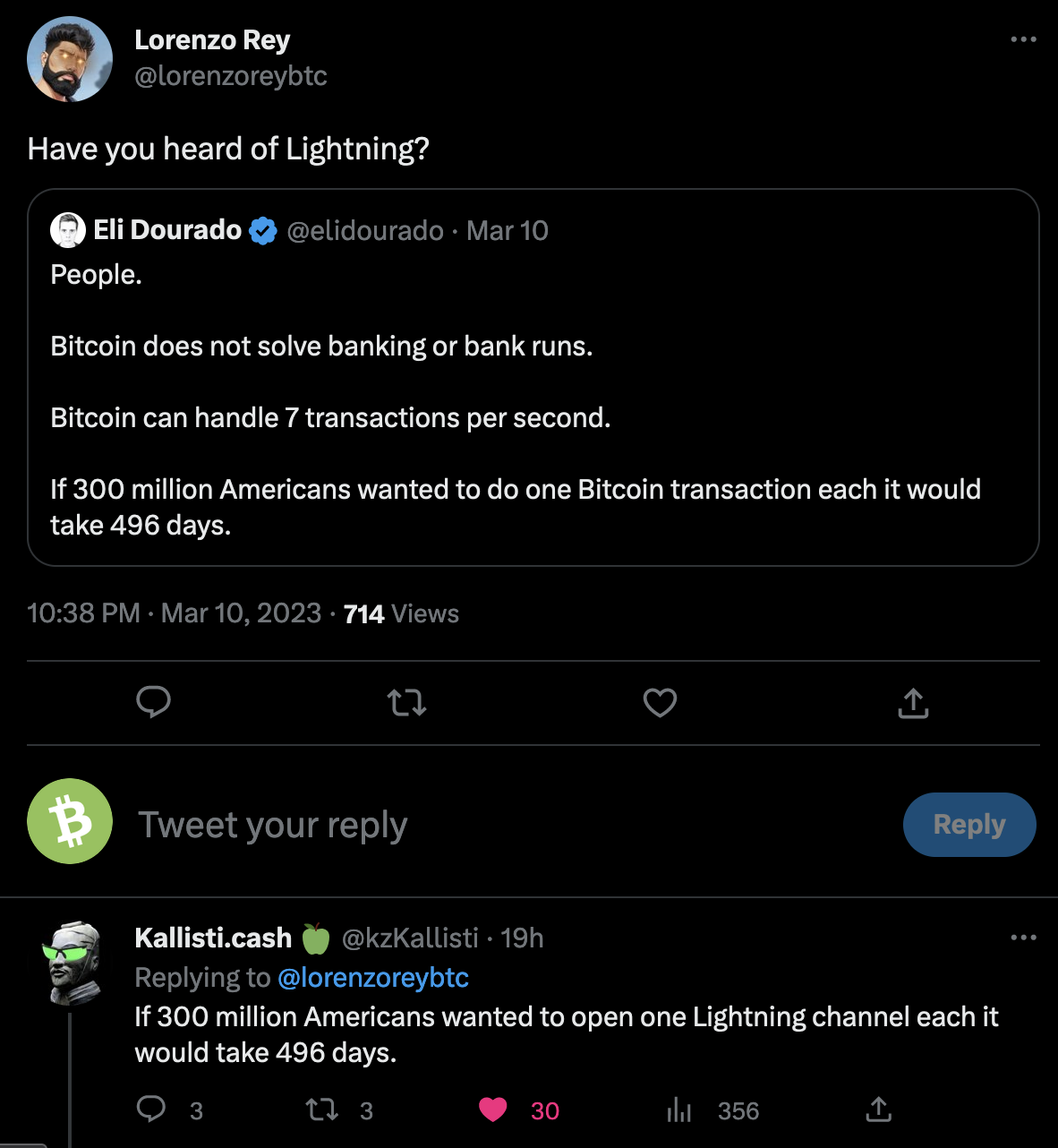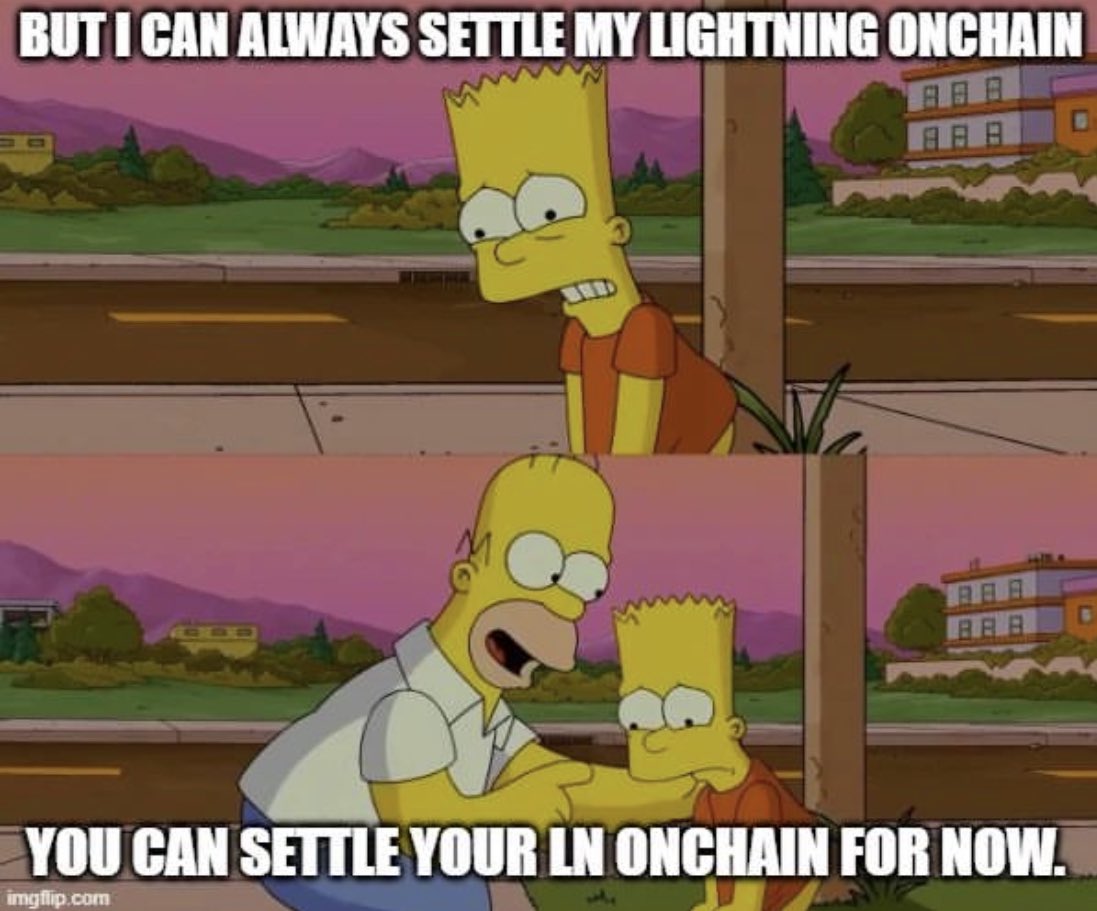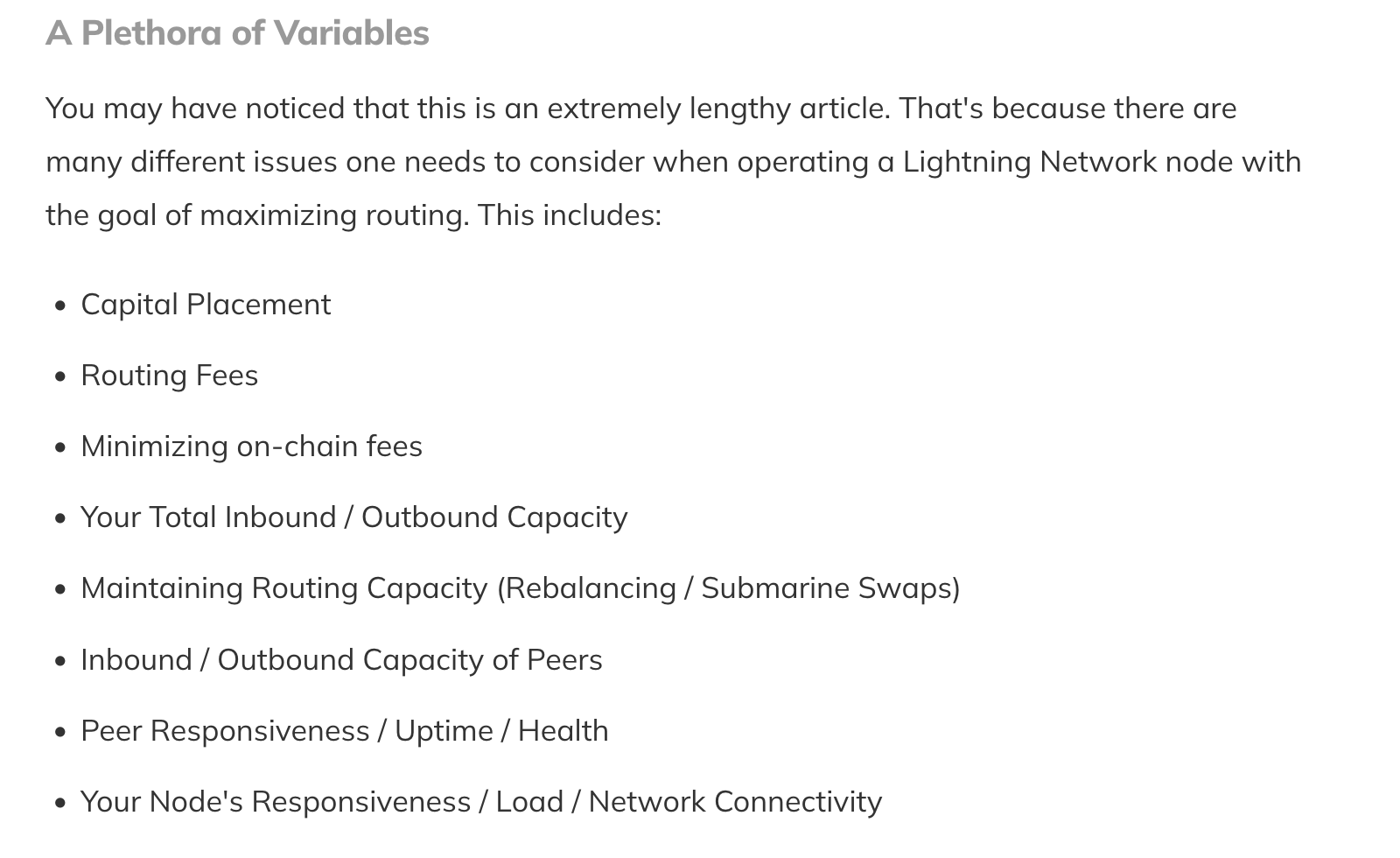What about the Lightning Network?

Realistically BTC handles about 3 TPS, but the Lightning Network needs all the leeway it can get. Source
The Bitcoin BTC community frequently presents the Lightning Network as a panacea solution to their high on-chain fees and poor payments reliability. It is generally explained as a bulletproof universal solution (often with the refrain "Bitcoin scales in layers") and mutually exclusive with scaling via blocksize increases. Neither is true. This can be particularly confusing for Bitcoin BTC adopters who are diving into the Bitcoin Cash community for the first time.
After 8 years of struggling to implement the Lightning Network, as of August 2023 large chunks of the BTC community are coming to the realisation that it isn't the bulletproof payments solution they expected. Instead of revisiting their assumptions or listening to the BCH community that warned them of this from the start, they are moving their efforts to other similarly flawed scaling "solutions" such as Fedimint, Coinpools or Ark to begin the cycle anew.
This confusion, delay & shoddy engineering is a result of the heavy censorship within their community.
Without open discussion, poor solutions & unintelligent leaders have inevitably risen to prominence in their community. There is no sign of this reversing. Defectors slowly find their way to the BCH community to escape this stagnation.
There are a number of important points to consider about Lightning Network.
- BCH compatible: Bitcoin Cash advocates don't have any ideological objection to the Lightning Network. If the Bitcoin BTC community can demonstrate it as a viable scaling solution, Bitcoin Cash will absorb the benefit of all of that work & open-source code developed on Bitcoin BTC by porting the software to BCH. Unlike the rigid Bitcoin BTC community, the Bitcoin Cash community proactively adopts and adapts provably valuable ideas from other cryptocurrencies. Some examples include CashTokens and the integration of the Ethereum/EVM ecosystem with SmartBCH. Ironically, the Lightning Network would actually function far more effectively on Bitcoin Cash than on Bitcoin BTC because lower on-chain fees ameliorate many of the problems explained below. That said, the Bitcoin Cash community has not diverted resources from on-chain scaling efforts towards replicating Lightning Network to date because it isn't necessary yet due to BCH's low on-chain fees and the Bitcoin BTC community are already doing extensive development work which can be copied later if necessary.
- Requires larger blocks: For the Lightning Network to function effectively, it requires at least 133 MB blocks. This point was made in the original Lightning Network white paper. Note that this assumes zero usage of the main Bitcoin blockchain for anything other than opening channels (no closing channels, no channel disputes, no regular on-chain payments, no other traffic from other sidechain solutions) so in reality blocksizes would need to be even larger.
If all transactions using Bitcoin were conducted inside a network of
micropayment channels, to enable 7 billion people to make two channels
per year with unlimited transactions inside the channel, it would require
133 MB blocks
- History: During the Blocksize War, Lightning Network was presented as the solution allowing Bitcoin to be used for payments. The point of Bitcoin itself was to be a peer-to-peer cash payments system so the idea that a perfectly working, successful and rapidly growing system with many happy users should be crippled in favour of a separate solution years away from maturity was clearly nonsensical. The options of a blocksize increase or Lightning Network were presented as mutually exclusive, which deliberately fractured the debate and explains why many Bitcoin BTC supporters today incorrectly assume Bitcoin Cash supporters are against the Lightning Network. There is nothing wrong with Lightning Network, except to the extent it is used as an excuse to avoid increasing Bitcoin blocksize.
- Custodial / complex: Although Bitcoin BTC supporters will say that Lightning Network is non-custodial, that is heavily asterisked at best and deliberately misleading at worst. Many popular Lightning Network wallets are partially or completely custodial, and those that aren't have other limitations such as requiring a self-hosted node, technical capability beyond simply storing seed phrases for recovering funds, reliance on cloud backups and other similar "gotchas". It is obvious that the vast majority of end users will not know or understand all these nuances, and default to using the UX of the simpler custodial solutions. The gap between non-custodial in theory and non-custodial in practice is very wide for the Lightning Network, but seeing it as a "catch all solution" abrogates a culture of teaching community members how on-chain payments and custody of private keys works.
- Centralisation: Channel routing on Lightning Network is not a solved problem, and the most efficient (and easiest to implement) solution is consistently routing through large central liquidity hubs (or in other words, what is known in the fiat system as "banks"). The best response is to only use Lightning Network for cases it is best adapted (ultra high volume payments between semi-trusted parties, with cheap on-chain fees to easily dispute on-chain if necessary) - which would work fantastically on Bitcoin Cash. However this approach is not feasible on Bitcoin BTC, since competition for on-chain blockspace will instead promote the centralised hub configuration of liquidity on Lightning Network (increasing systemic fragility and vulnerability to regulation or other attacks). This is one of many problems with BTC.
- Fee Extraction: Routing fees on Lightning Network are funds that otherwise would have been paid as on-chain fees to Bitcoin miners. In this way, the Lightning Network can potentially siphon away enough money to prevent Bitcoin miners earning enough from transaction fees to maintain chain security hashing power. It's possible eventually there will be enough activity to sustain both, but that is far from established (particularly with the low-volume, high-fees on-chain model of Bitcoin BTC). In this way, pre-emptive implementation of Lightning Network may parasitically destroy the long term security of the underlying chain - another reason BCH is not focussed on Lightning Network at this stage.
For a big list of other bugs and issues with the Lightning Network, check out this compilation. For a look into the massive complexity and issues inherent in making a Lightning wallet, see this article.

Note that increasing on-chain BTC fees will eventually cut off consumer access to the Bitcoin blockchain entirely - thus isolating them into the Lightning Network and defeating the entire point of Bitcoin's self-custody of funds revolution.
Lightning Network critiques are easy to find even from prominent BTC supporters. Consider this article by prominent BTC advocate Shinobi. Other prominent BTC Lightning advocates will readily admit that the system is incredibly complicated to use and/or scale.

As every Bitcoin onboarder knows, getting people to use Bitcoin is already hard enough. Why make it even worse with all this? Source
For a detailed breakdown of the forthcoming fee extraction and liquidity problems on Lightning Network, check out this video by Joël Valenzuela.
A good breakdown of lots of these problems (as well as the history of its creation and financial backers) can be found in the Who Killed Bitcoin documentary: